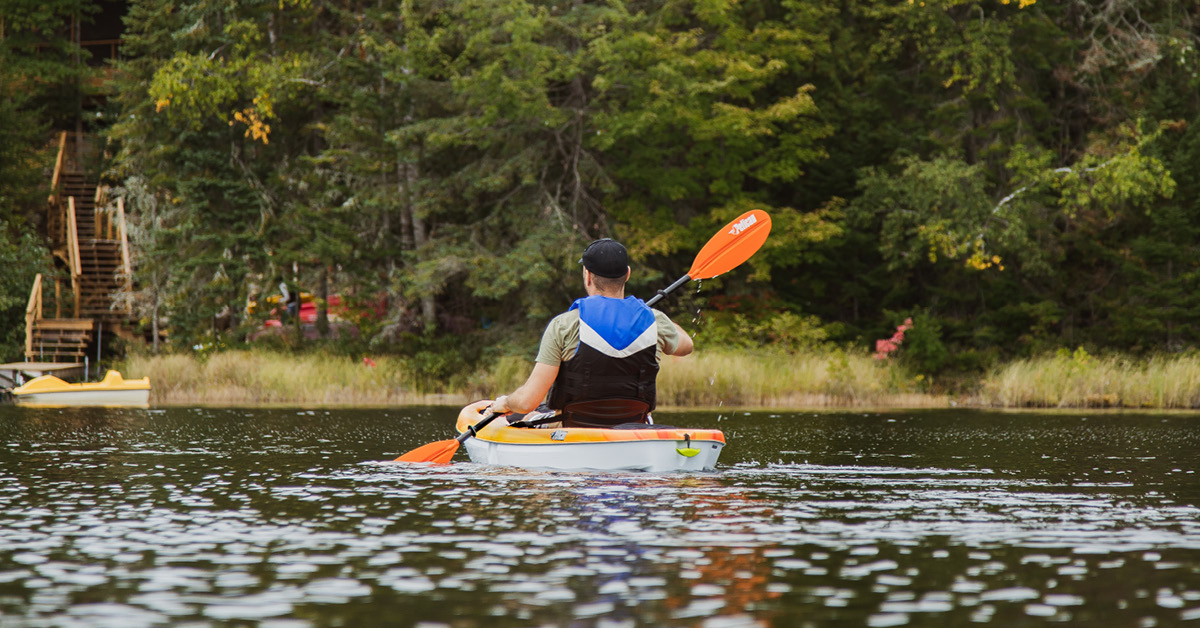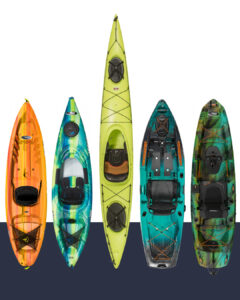How to prevent and treat foot blisters
Outdoor Activities | March 28, 2024
SAIL
April 30, 2021

A light breeze gently creating ripples along the surface of the water, the sun warming your face, that feeling of gliding along with the flow…kayaking is such a worthwhile nautical sport to experience, although it does require a certain mastery of some key maneuvers, as well as good practices when it comes to safety. Learn more about the intrigue of kayaking before your first time out on a brand new waterbody.
Why choose kayaking?
In addition to providing an unparalleled feeling of well-being and freedom, kayaking is a sport that allows you to maintain a straight line (or “track better” if using paddling lingo), than canoes. Instead of switching constantly from side to side, the balanced strokes of a kayaker help keep the boat moving straight and steady.
Think about what you plan to do in your new kayak (short rides, races, long expeditions, etc.) and the type of water on which you plan to navigate (lake, river, sea, closed basin, etc.). Depending on your goals, kayaking can be an innovative and sporty way to explore new horizons from a different perspective.
Before you start shopping for a kayak, especially if you’ve never done it before, it is recommended that you borrow your friend’s kayak to try out the sport on calm and flat water first (make sure you are accompanied) and/or to sign up for a kayaking intro course.
You will be able to assess your ease in being on the water and practice your paddling strokes to move forward, backward and turn.
If you opt to take a course, you can also learn the rescue technique (i.e. how to get back into the kayak if you capsize) and the eskimo roll technique that will allow you to return and tip your kayak back upwards (which you should favour over trying to hoist yourself out of the water).

(from left to right: recreational sit-on-top kayak, recreational sit-in kayak, touring kayak, fishing kayak, fishing kayak with pedals)
Nowadays, choices for open-water kayaking are numerous and the kayak you choose depends on where you want to paddle, your budget and the type of experience you have in mind.
For a leisurely paddle on a small lake or hugging the shoreline of larger lakes, recreational kayaks are your best bet. Between 9-12 feet long and much wider than their lengthier cousins, what these types of kayaks lack in speed they make up for in stability.
If you’re worried about not being able to squeeze out of the boat, recreational kayaks are available with generous sized cockpits. That means it doesn’t take a move you learned in yoga class to get out and there’s plenty of room to ease yourself into the seat and spread out your legs. Some kayaks also have a rudder. This tool allows you to maintain the direction of the kayak and to counter the side wind. It can also be controlled with the pedals and help you turn.
If that still isn’t enough, a sit-on-top kayak may be the right fit. No cockpit, just an open hull that lets you tan and spread out. And if it happens to tip, just flip the boat right side up and keep on paddling.
Longer touring boats, on the other hand, are better suited to bigger bodies of water such as the Great Lakes or Georgian Bay. Narrower and with a few more feet under you these boats are designed to handle big swells and choppier seas. Their size also means larger weight capacity for extended trips which leads to a very important subject when it comes to kayaks…bulkheads. It can be a good idea to master recreational kayaking before you try on sea or river kayaking.
Finally, there are also fishing kayaks which often include a rod holder and rudder. Again, even if you are an experienced angler, you may want to try fishing kayaking once you have mastered the use of recreational kayaking.
There you go…you are ready to take the plunge!
Shop – Kayaks